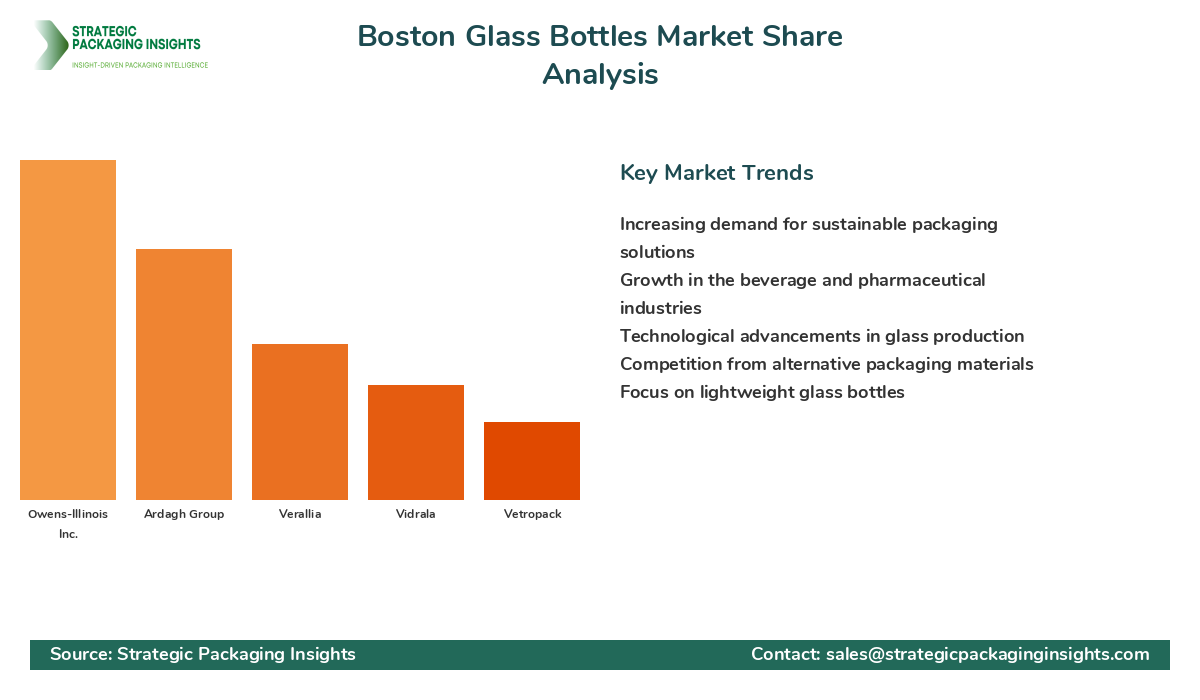- Home
- Beverage Packaging
- Boston Glass Bottles Market Size, Future Growth and Forecast 2033
Boston Glass Bottles Market Size, Future Growth and Forecast 2033
Boston Glass Bottles Market Segments - by Material (Type A, Type B), Application (Beverage, Pharmaceuticals, Cosmetics, Food, Chemicals), End-User (Manufacturers, Distributors, Retailers), and Region (North America, Europe, Asia Pacific, Latin America, Middle East & Africa) - Market Dynamics, Growth Opportunities, Strategic Drivers, and PESTLE Outlook (2025–2033)
Boston Glass Bottles Market Outlook
The Boston Glass Bottles market was valued at $2.5 billion in 2024 and is projected to reach $4.3 billion by 2033, growing at a CAGR of 5.8% during the forecast period 2025-2033. This market is driven by the increasing demand for sustainable and eco-friendly packaging solutions. Glass bottles are preferred due to their recyclability and inert nature, which ensures product safety and quality. The rise in consumer awareness regarding environmental issues and the shift towards sustainable packaging are significant drivers for this market. Additionally, the growth of the beverage and pharmaceutical industries, which are major end-users of glass bottles, further propels market expansion.
However, the market faces challenges such as the high cost of glass production and the competition from alternative packaging materials like plastics and metals. Regulatory restrictions on carbon emissions and energy consumption in glass manufacturing also pose significant restraints. Despite these challenges, the market holds substantial growth potential due to technological advancements in glass production and the increasing adoption of lightweight glass bottles. These innovations not only reduce production costs but also enhance the appeal of glass bottles as a packaging solution.
Report Scope
| Attributes | Details |
| Report Title | Boston Glass Bottles Market Size, Future Growth and Forecast 2033 |
| Base Year | 2024 |
| Historic Data | 2017-2023 |
| Forecast Period | 2025-2033 |
| Number of Pages | 170 |
| Material | Type A, Type B |
| Application | Beverage, Pharmaceuticals, Cosmetics, Food, Chemicals |
| End-User | Manufacturers, Distributors, Retailers |
| Region | North America, Europe, Asia Pacific, Latin America, Middle East & Africa |
| Customization Available | Yes* |
Opportunities & Threats
The Boston Glass Bottles market presents numerous opportunities, particularly in the realm of eco-friendly packaging. As consumers become more environmentally conscious, there is a growing demand for sustainable packaging solutions. Glass bottles, being 100% recyclable, are at the forefront of this trend. Companies that invest in green technologies and sustainable practices are likely to gain a competitive edge. Furthermore, the increasing popularity of premium products in the beverage and cosmetics industries offers opportunities for high-quality glass bottle manufacturers to cater to niche markets that value aesthetics and product integrity.
Another opportunity lies in the expanding pharmaceutical industry, which requires high-quality packaging solutions to ensure product safety and efficacy. Glass bottles are preferred in this sector due to their non-reactive nature, which prevents contamination and preserves the integrity of the contents. As the global pharmaceutical market continues to grow, so does the demand for reliable packaging solutions, presenting a lucrative opportunity for glass bottle manufacturers.
Despite these opportunities, the market faces threats from alternative packaging materials such as plastics and metals, which are often cheaper and more versatile. The high cost of glass production, coupled with the energy-intensive nature of the manufacturing process, poses a significant challenge. Additionally, stringent environmental regulations regarding carbon emissions and energy consumption in glass production could impact market growth. Companies must innovate and adopt energy-efficient technologies to mitigate these threats and remain competitive.
The Boston Glass Bottles market is characterized by a competitive landscape with several key players vying for market share. The market is dominated by a few large companies, but there is also a significant presence of small and medium-sized enterprises that cater to niche markets. The competitive dynamics are influenced by factors such as product quality, innovation, pricing strategies, and customer service. Companies that can offer unique value propositions and maintain strong relationships with their clients are likely to succeed in this market.
Owens-Illinois Inc. is a major player in the Boston Glass Bottles market, known for its extensive product portfolio and strong global presence. The company focuses on innovation and sustainability, offering a range of eco-friendly glass packaging solutions. Ardagh Group is another key player, with a strong emphasis on design and customization, catering to the specific needs of its clients. Verallia, with its focus on sustainable development and innovation, is also a significant competitor in the market.
Other notable companies include Vidrala, which has a strong presence in the European market, and Vetropack, known for its high-quality glass packaging solutions. These companies are investing in research and development to enhance their product offerings and maintain a competitive edge. The market also sees competition from regional players who focus on specific applications or geographic areas, providing tailored solutions to meet local demands.
Key Highlights Boston Glass Bottles Market
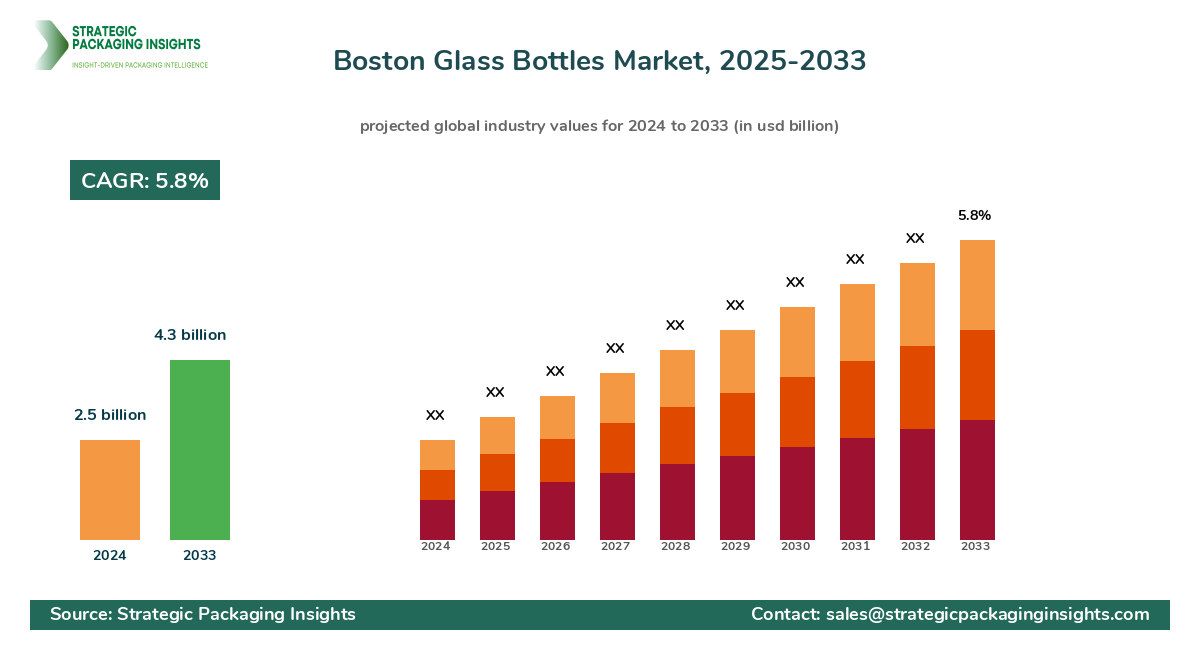
- Increasing demand for sustainable and eco-friendly packaging solutions.
- Growth in the beverage and pharmaceutical industries driving market expansion.
- Technological advancements in glass production reducing costs and enhancing appeal.
- Competition from alternative packaging materials such as plastics and metals.
- Regulatory restrictions on carbon emissions and energy consumption in glass manufacturing.
- Opportunities in premium product markets in the beverage and cosmetics industries.
- Expanding pharmaceutical industry requiring high-quality packaging solutions.
- Innovation and sustainability as key competitive differentiators.
- Strong presence of regional players catering to specific markets.
- Focus on lightweight glass bottles to reduce production costs and environmental impact.
Competitive Intelligence
The Boston Glass Bottles market is highly competitive, with several key players striving to maintain and expand their market share. Owens-Illinois Inc. leads the market with its extensive product range and strong focus on sustainability. The company has made significant investments in research and development to enhance its product offerings and reduce its environmental footprint. Ardagh Group follows closely, known for its innovative designs and customization capabilities, which cater to the specific needs of its clients.
Verallia is another major player, emphasizing sustainable development and innovation. The company has a strong presence in Europe and is expanding its operations globally. Vidrala, with its focus on the European market, offers high-quality glass packaging solutions and is known for its customer-centric approach. Vetropack, a key competitor, is recognized for its high-quality products and strong emphasis on sustainability.
These companies are investing heavily in technology and innovation to stay ahead of the competition. They are also focusing on strategic partnerships and collaborations to expand their market reach and enhance their product offerings. The competitive landscape is further shaped by regional players who cater to specific markets, providing tailored solutions to meet local demands. Companies that can effectively differentiate themselves through innovation, sustainability, and customer service are likely to gain a competitive advantage in this market.
Regional Market Intelligence of Boston Glass Bottles
The global Boston Glass Bottles market is segmented into several key regions, each with its unique market dynamics. In North America, the market is driven by the increasing demand for sustainable packaging solutions and the growth of the beverage and pharmaceutical industries. The region is characterized by a strong presence of key players and a high level of innovation in glass production technologies.
In Europe, the market is influenced by stringent environmental regulations and a strong focus on sustainability. The region is home to several leading glass bottle manufacturers who are investing in eco-friendly technologies and practices. The growth of the cosmetics and premium beverage markets also contributes to the demand for high-quality glass packaging solutions.
The Asia Pacific region is experiencing rapid market growth, driven by the expanding middle class and increasing consumer awareness of environmental issues. The region's growing beverage and pharmaceutical industries further fuel the demand for glass bottles. In Latin America, the market is supported by the growth of the food and beverage sectors, with a focus on premium and artisanal products.
In the Middle East & Africa, the market is characterized by a growing demand for high-quality packaging solutions in the food and beverage industries. The region's increasing focus on sustainability and environmental conservation also drives the demand for glass bottles. Overall, the global market is shaped by regional differences in consumer preferences, regulatory environments, and industry growth patterns.
Top Countries Insights in Boston Glass Bottles
The United States is a leading market for Boston Glass Bottles, with a current market size of $1.2 billion and a CAGR of 6%. The country's strong focus on sustainability and the growth of the beverage and pharmaceutical industries drive market demand. In Germany, the market is valued at $800 million, with a CAGR of 5%. The country's stringent environmental regulations and emphasis on high-quality packaging solutions contribute to market growth.
China is experiencing rapid market expansion, with a current market size of $700 million and a CAGR of 8%. The country's growing middle class and increasing consumer awareness of environmental issues drive demand for glass bottles. In Brazil, the market is valued at $500 million, with a CAGR of 4%. The growth of the food and beverage sectors, particularly in premium and artisanal products, supports market demand.
In the United Arab Emirates, the market is valued at $300 million, with a CAGR of 7%. The country's focus on high-quality packaging solutions in the food and beverage industries, along with increasing sustainability efforts, drives market growth. These countries represent significant opportunities for market expansion, driven by unique growth drivers and challenges.
Boston Glass Bottles Market Segments Insights
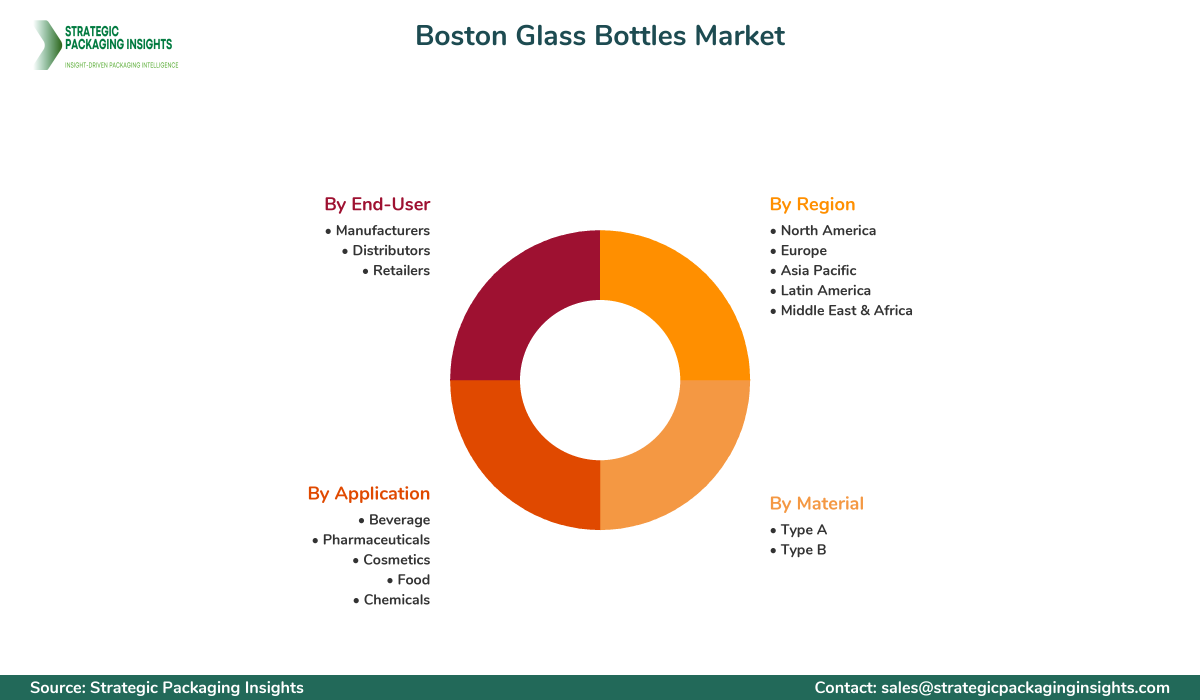
Material Analysis
The Boston Glass Bottles market is segmented by material, with Type A and Type B being the primary categories. Type A glass bottles are known for their durability and resistance to chemical reactions, making them ideal for pharmaceutical and chemical applications. The demand for Type A glass bottles is driven by the need for high-quality packaging solutions that ensure product safety and integrity. Type B glass bottles, on the other hand, are favored for their aesthetic appeal and versatility, making them popular in the beverage and cosmetics industries. The growing demand for premium products in these sectors fuels the demand for Type B glass bottles.
Technological advancements in glass production have led to the development of lightweight and eco-friendly glass bottles, which are gaining popularity across various applications. These innovations not only reduce production costs but also enhance the appeal of glass bottles as a sustainable packaging solution. Companies that invest in research and development to improve the quality and sustainability of their glass bottles are likely to gain a competitive edge in this market.
Application Analysis
The application segment of the Boston Glass Bottles market includes beverage, pharmaceuticals, cosmetics, food, and chemicals. The beverage industry is a major driver of market demand, with glass bottles being preferred for their ability to preserve the taste and quality of beverages. The growing popularity of premium and artisanal beverages further fuels the demand for high-quality glass bottles. In the pharmaceutical industry, glass bottles are favored for their non-reactive nature, which ensures the safety and efficacy of the contents.
The cosmetics industry also contributes significantly to market demand, with glass bottles being used for their aesthetic appeal and ability to preserve the integrity of cosmetic products. The food industry, particularly in the premium and organic segments, is increasingly adopting glass bottles as a sustainable packaging solution. The chemical industry, although a smaller segment, relies on glass bottles for their durability and resistance to chemical reactions.
End-User Analysis
The end-user segment of the Boston Glass Bottles market includes manufacturers, distributors, and retailers. Manufacturers are the primary consumers of glass bottles, using them for packaging a wide range of products across various industries. The demand for glass bottles among manufacturers is driven by the need for high-quality and sustainable packaging solutions that enhance product appeal and ensure safety.
Distributors play a crucial role in the market, acting as intermediaries between manufacturers and retailers. They are responsible for ensuring the timely and efficient delivery of glass bottles to meet market demand. Retailers, particularly those in the premium and artisanal product segments, are increasingly adopting glass bottles as a way to differentiate their products and appeal to environmentally conscious consumers. The growing focus on sustainability and premium packaging solutions among end-users is a key driver of market demand.
Region Analysis
The regional segment of the Boston Glass Bottles market includes North America, Europe, Asia Pacific, Latin America, and the Middle East & Africa. Each region has its unique market dynamics, driven by factors such as consumer preferences, regulatory environments, and industry growth patterns. In North America, the market is driven by the increasing demand for sustainable packaging solutions and the growth of the beverage and pharmaceutical industries.
In Europe, the market is influenced by stringent environmental regulations and a strong focus on sustainability. The region is home to several leading glass bottle manufacturers who are investing in eco-friendly technologies and practices. The Asia Pacific region is experiencing rapid market growth, driven by the expanding middle class and increasing consumer awareness of environmental issues. In Latin America, the market is supported by the growth of the food and beverage sectors, with a focus on premium and artisanal products. In the Middle East & Africa, the market is characterized by a growing demand for high-quality packaging solutions in the food and beverage industries.
Market Share Analysis
The market share distribution of key players in the Boston Glass Bottles market is influenced by factors such as product quality, innovation, pricing strategies, and customer service. Owens-Illinois Inc. leads the market with a significant share, driven by its extensive product range and strong focus on sustainability. Ardagh Group follows closely, known for its innovative designs and customization capabilities. Verallia, with its emphasis on sustainable development and innovation, is also a major player in the market.
Other notable companies include Vidrala and Vetropack, which have a strong presence in the European market. These companies are investing in research and development to enhance their product offerings and maintain a competitive edge. The market also sees competition from regional players who focus on specific applications or geographic areas, providing tailored solutions to meet local demands. The competitive positioning of these companies affects pricing, innovation, and partnerships, shaping the overall market dynamics.
Boston Glass Bottles Market Segments
The Boston Glass Bottles market has been segmented on the basis of
Material
- Type A
- Type B
Application
- Beverage
- Pharmaceuticals
- Cosmetics
- Food
- Chemicals
End-User
- Manufacturers
- Distributors
- Retailers
Region
- North America
- Europe
- Asia Pacific
- Latin America
- Middle East & Africa
Primary Interview Insights
What are the key drivers of the Boston Glass Bottles market?
What challenges does the Boston Glass Bottles market face?
How are companies in the Boston Glass Bottles market addressing sustainability?
What opportunities exist in the Boston Glass Bottles market?
How is the competitive landscape shaping up in the Boston Glass Bottles market?
Latest Reports

The Hot Melt Glue Labeler market was valued at $1.2 billion in 2024 and is projected to reach $2.3 billion by 2033, growing at a CAGR of 6.5% during the forecast period 2025–2033.

The Ethical Label market was valued at $1.5 billion in 2024 and is projected to reach $3.2 billion by 2033, growing at a CAGR of 8.5% during the forecast period 2025–2033.

The Packaging Tensioner market was valued at $1.2 billion in 2024 and is projected to reach $2.3 billion by 2033, growing at a CAGR of 6.5% during the forecast period 2025–2033.
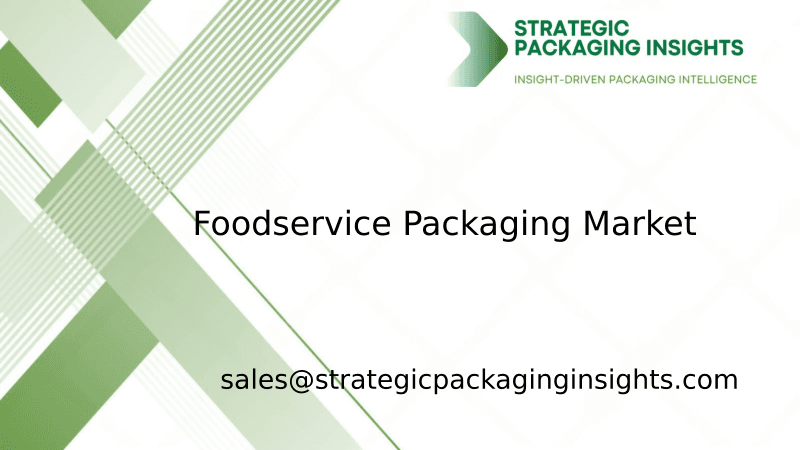
The foodservice packaging market was valued at $120 billion in 2024 and is projected to reach $180 billion by 2033, growing at a CAGR of 4.5% during the forecast period 2025–2033.

The nano-enabled packaging market was valued at $15.2 billion in 2024 and is projected to reach $35.6 billion by 2033, growing at a CAGR of 9.5% during the forecast period 2025–2033.
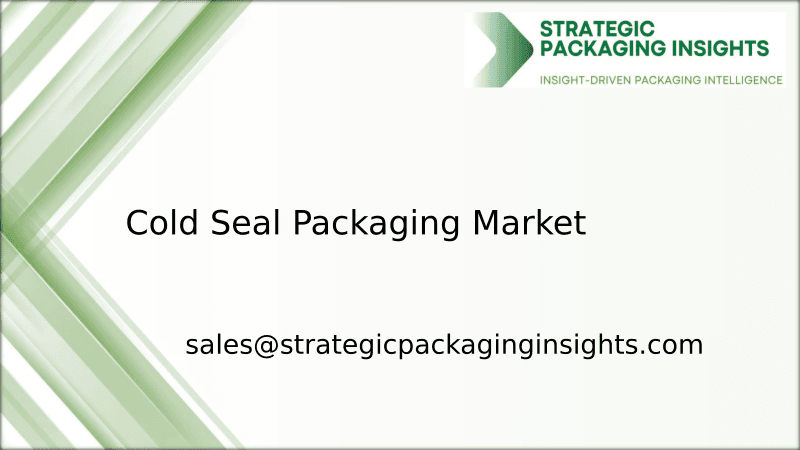
The Cold Seal Packaging market was valued at $1.5 billion in 2024 and is projected to reach $2.3 billion by 2033, growing at a CAGR of 4.8% during the forecast period 2025–2033.

The Transparent Barrier Packaging Films market was valued at $12.5 billion in 2024 and is projected to reach $20.3 billion by 2033, growing at a CAGR of 5.8% during the forecast period 2025–2033.

The Flatback Tape market was valued at $2.5 billion in 2024 and is projected to reach $4.1 billion by 2033, growing at a CAGR of 5.8% during the forecast period 2025–2033.
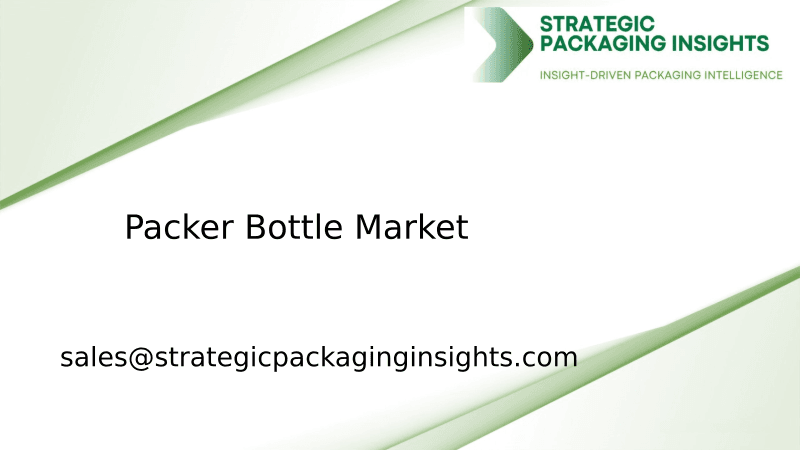
The packer bottle market was valued at $3.5 billion in 2024 and is projected to reach $5.8 billion by 2033, growing at a CAGR of 5.2% during the forecast period 2025–2033.
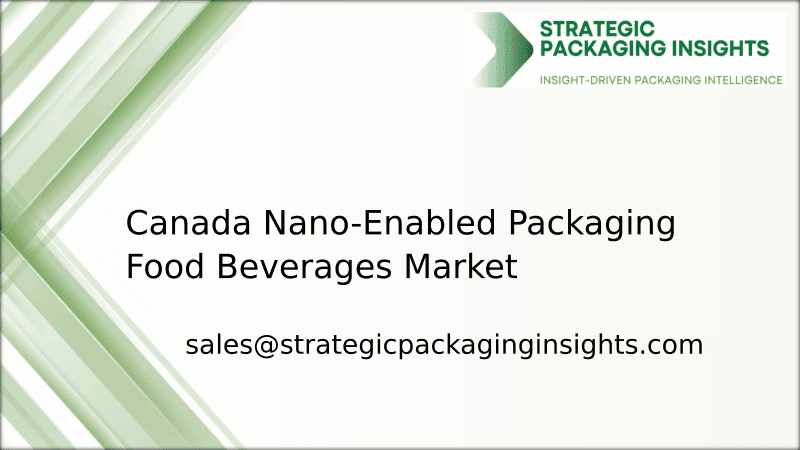
The Canada Nano-Enabled Packaging Food Beverages market was valued at $1.2 billion in 2024 and is projected to reach $3.5 billion by 2033, growing at a CAGR of 12.5% during the forecast period 2025–2033.
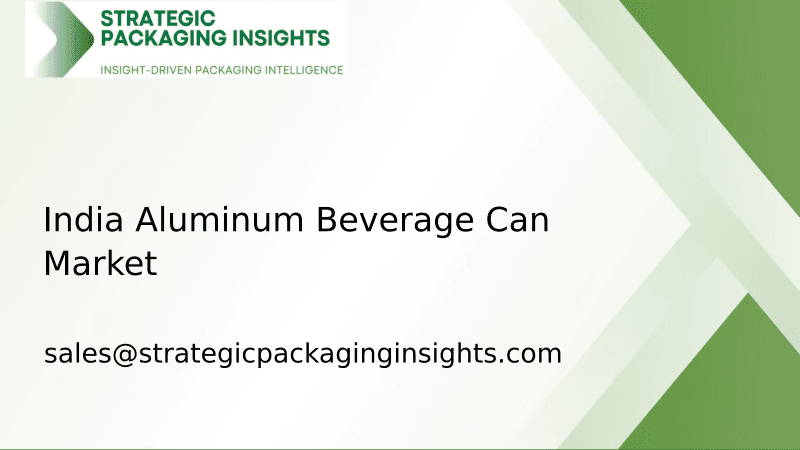
The India Aluminum Beverage Can market was valued at $1.2 billion in 2024 and is projected to reach $2.5 billion by 2033, growing at a CAGR of 8.5% during the forecast period 2025–2033.
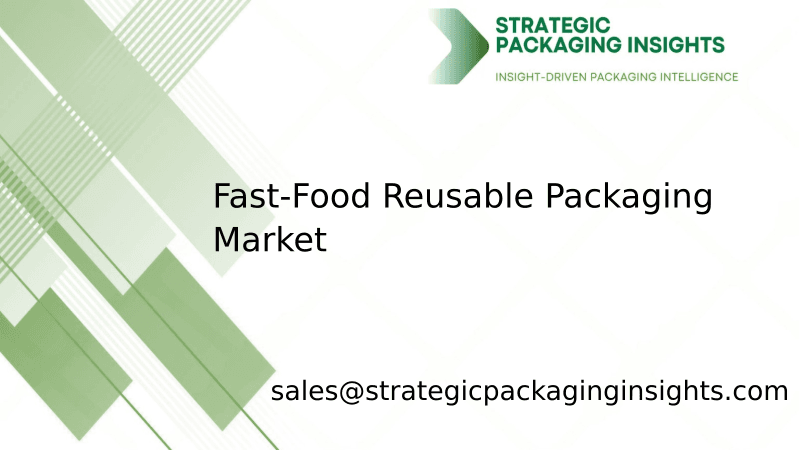
The fast-food reusable packaging market was valued at $1.2 billion in 2024 and is projected to reach $3.5 billion by 2033, growing at a CAGR of 12.5% during the forecast period 2025–2033.
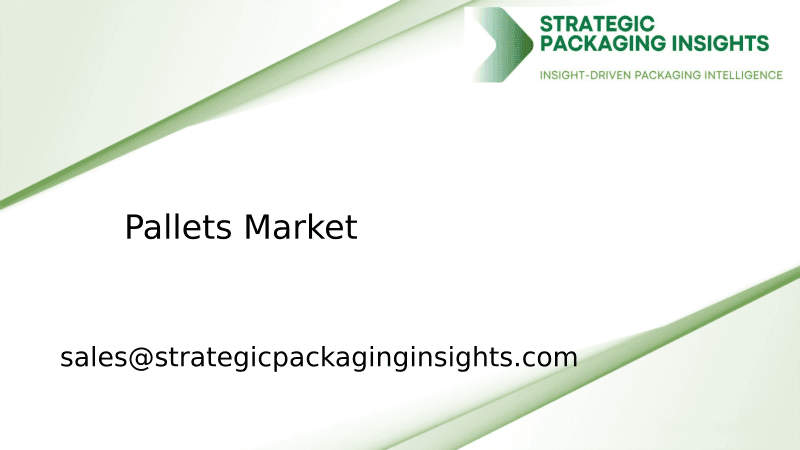
The pallets market was valued at $59.91 billion in 2024 and is projected to reach $88.69 billion by 2033, growing at a CAGR of 4.5% during the forecast period 2025–2033.

The lamination adhesives market was valued at $2.5 billion in 2024 and is projected to reach $4.1 billion by 2033, growing at a CAGR of 5.8% during the forecast period 2025–2033.

The garment packing machine market was valued at $1.2 billion in 2024 and is projected to reach $2.5 billion by 2033, growing at a CAGR of 8.5% during the forecast period 2025–2033.
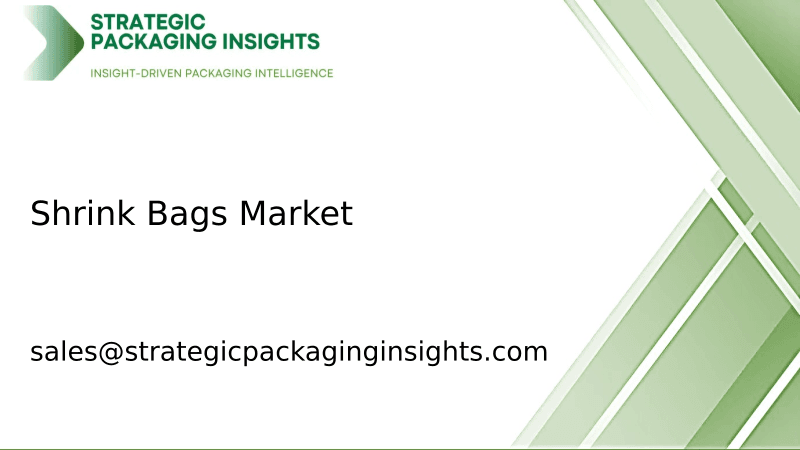
The shrink bags market was valued at $3.5 billion in 2024 and is projected to reach $5.8 billion by 2033, growing at a CAGR of 5.2% during the forecast period 2025–2033.
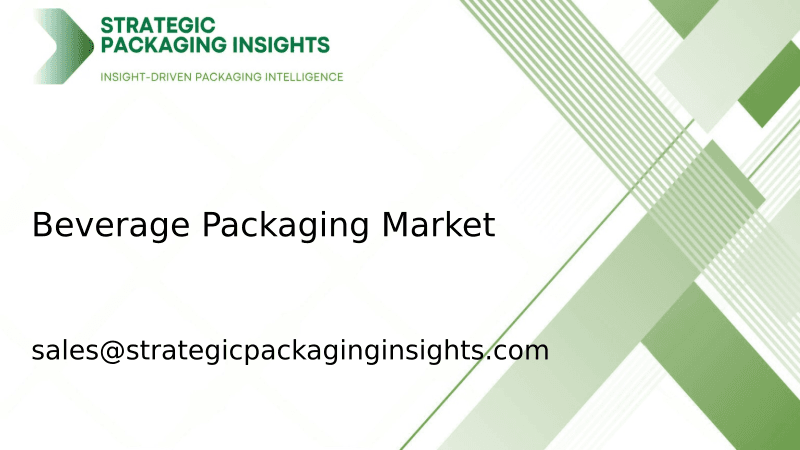
The beverage packaging market was valued at $128 billion in 2024 and is projected to reach $186 billion by 2033, growing at a CAGR of 4.2% during the forecast period 2025–2033.

The North America Freight and Logistics market was valued at $1,200 billion in 2024 and is projected to reach $1,800 billion by 2033, growing at a CAGR of 4.5% during the forecast period 2025–2033.
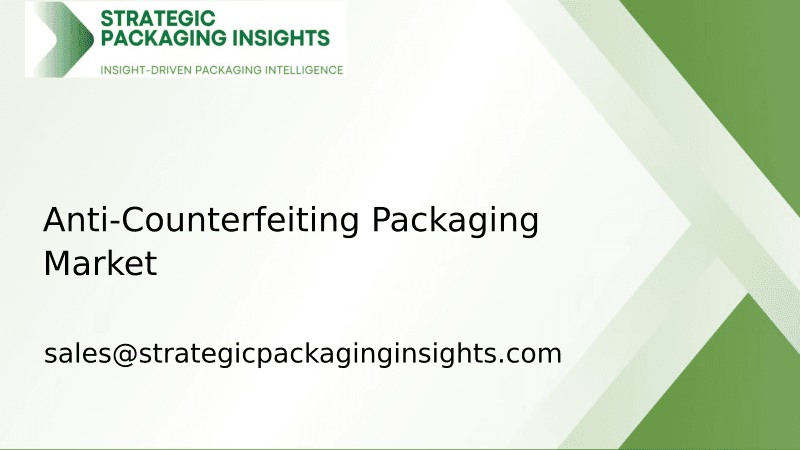
The Anti-Counterfeiting Packaging market was valued at $105 billion in 2024 and is projected to reach $182 billion by 2033, growing at a CAGR of 6.5% during the forecast period 2025–2033.

The Active and Modified Atmospheric Packaging market was valued at $15.2 billion in 2024 and is projected to reach $25.8 billion by 2033, growing at a CAGR of 6.5% during the forecast period 2025–2033.

The molded fiber packaging market was valued at $7.5 billion in 2024 and is projected to reach $12.3 billion by 2033, growing at a CAGR of 5.8% during the forecast period 2025–2033.

The micro packaging market was valued at $1.2 billion in 2024 and is projected to reach $2.5 billion by 2033, growing at a CAGR of 8.5% during the forecast period 2025–2033.

The Anti-counterfeit Pharmaceuticals Packaging market was valued at $80 billion in 2024 and is projected to reach $150 billion by 2033, growing at a CAGR of 7.5% during the forecast period 2025–2033.
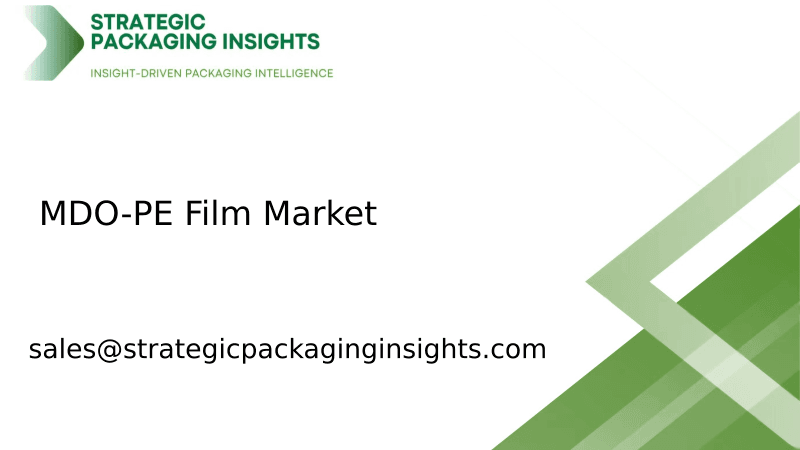
The MDO-PE Film market was valued at $3.5 billion in 2024 and is projected to reach $5.8 billion by 2033, growing at a CAGR of 5.2% during the forecast period 2025–2033.
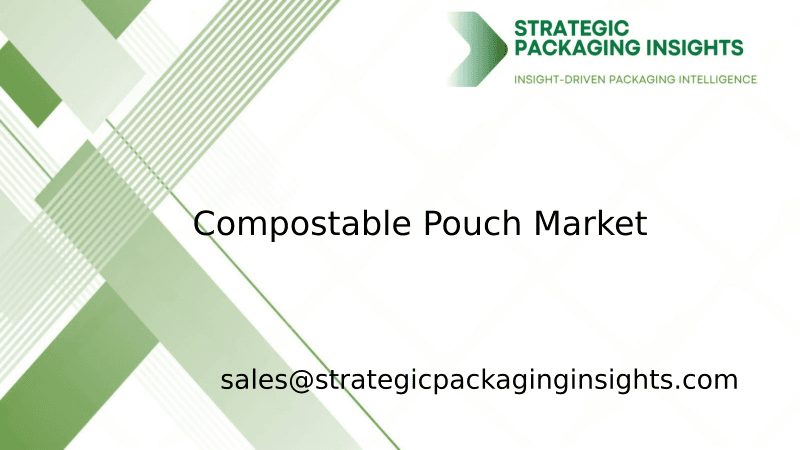
The compostable pouch market was valued at $1.2 billion in 2024 and is projected to reach $3.5 billion by 2033, growing at a CAGR of 12.5% during the forecast period 2025–2033.

The Hot Melt Glue Labeler market was valued at $1.2 billion in 2024 and is projected to reach $2.3 billion by 2033, growing at a CAGR of 6.5% during the forecast period 2025–2033.

The Ethical Label market was valued at $1.5 billion in 2024 and is projected to reach $3.2 billion by 2033, growing at a CAGR of 8.5% during the forecast period 2025–2033.

The Packaging Tensioner market was valued at $1.2 billion in 2024 and is projected to reach $2.3 billion by 2033, growing at a CAGR of 6.5% during the forecast period 2025–2033.

The foodservice packaging market was valued at $120 billion in 2024 and is projected to reach $180 billion by 2033, growing at a CAGR of 4.5% during the forecast period 2025–2033.

The nano-enabled packaging market was valued at $15.2 billion in 2024 and is projected to reach $35.6 billion by 2033, growing at a CAGR of 9.5% during the forecast period 2025–2033.

The Cold Seal Packaging market was valued at $1.5 billion in 2024 and is projected to reach $2.3 billion by 2033, growing at a CAGR of 4.8% during the forecast period 2025–2033.

The Transparent Barrier Packaging Films market was valued at $12.5 billion in 2024 and is projected to reach $20.3 billion by 2033, growing at a CAGR of 5.8% during the forecast period 2025–2033.

The Flatback Tape market was valued at $2.5 billion in 2024 and is projected to reach $4.1 billion by 2033, growing at a CAGR of 5.8% during the forecast period 2025–2033.

The packer bottle market was valued at $3.5 billion in 2024 and is projected to reach $5.8 billion by 2033, growing at a CAGR of 5.2% during the forecast period 2025–2033.

The Canada Nano-Enabled Packaging Food Beverages market was valued at $1.2 billion in 2024 and is projected to reach $3.5 billion by 2033, growing at a CAGR of 12.5% during the forecast period 2025–2033.

The India Aluminum Beverage Can market was valued at $1.2 billion in 2024 and is projected to reach $2.5 billion by 2033, growing at a CAGR of 8.5% during the forecast period 2025–2033.

The fast-food reusable packaging market was valued at $1.2 billion in 2024 and is projected to reach $3.5 billion by 2033, growing at a CAGR of 12.5% during the forecast period 2025–2033.

The pallets market was valued at $59.91 billion in 2024 and is projected to reach $88.69 billion by 2033, growing at a CAGR of 4.5% during the forecast period 2025–2033.

The lamination adhesives market was valued at $2.5 billion in 2024 and is projected to reach $4.1 billion by 2033, growing at a CAGR of 5.8% during the forecast period 2025–2033.

The garment packing machine market was valued at $1.2 billion in 2024 and is projected to reach $2.5 billion by 2033, growing at a CAGR of 8.5% during the forecast period 2025–2033.

The shrink bags market was valued at $3.5 billion in 2024 and is projected to reach $5.8 billion by 2033, growing at a CAGR of 5.2% during the forecast period 2025–2033.

The beverage packaging market was valued at $128 billion in 2024 and is projected to reach $186 billion by 2033, growing at a CAGR of 4.2% during the forecast period 2025–2033.

The North America Freight and Logistics market was valued at $1,200 billion in 2024 and is projected to reach $1,800 billion by 2033, growing at a CAGR of 4.5% during the forecast period 2025–2033.

The Anti-Counterfeiting Packaging market was valued at $105 billion in 2024 and is projected to reach $182 billion by 2033, growing at a CAGR of 6.5% during the forecast period 2025–2033.

The Active and Modified Atmospheric Packaging market was valued at $15.2 billion in 2024 and is projected to reach $25.8 billion by 2033, growing at a CAGR of 6.5% during the forecast period 2025–2033.

The molded fiber packaging market was valued at $7.5 billion in 2024 and is projected to reach $12.3 billion by 2033, growing at a CAGR of 5.8% during the forecast period 2025–2033.

The micro packaging market was valued at $1.2 billion in 2024 and is projected to reach $2.5 billion by 2033, growing at a CAGR of 8.5% during the forecast period 2025–2033.

The Anti-counterfeit Pharmaceuticals Packaging market was valued at $80 billion in 2024 and is projected to reach $150 billion by 2033, growing at a CAGR of 7.5% during the forecast period 2025–2033.

The MDO-PE Film market was valued at $3.5 billion in 2024 and is projected to reach $5.8 billion by 2033, growing at a CAGR of 5.2% during the forecast period 2025–2033.

The compostable pouch market was valued at $1.2 billion in 2024 and is projected to reach $3.5 billion by 2033, growing at a CAGR of 12.5% during the forecast period 2025–2033.
